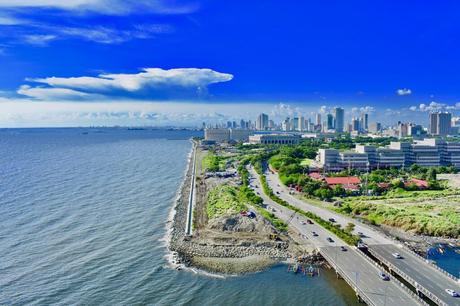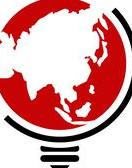
The Philippines is an archipelago in South East Asia, made up of three main island groups: Luzon to the north, which includes Manila, Visayas in the center, and Mindanao to the south.
Getting to the Philippines is simple; most travelers arrive in Manila from connections via Singapore, Hong Kong, and Kuala Lumpur at the main international airport. To really get a feel for what the country has to offer, you'll need to go between island areas.It's important to keep in mind that if you want to visit all of the islands, an open ticket might save you money and time. When purchasing your flights, consider whether or not an `open` ticket is a better option. This eliminates the need to backtrack during your journey, allowing for example, flying into Manila then out of Cebu.
Manila has four railway networks, one of which is a light rail system that runs from north to south and east to west. The Metro is an excellent option for tourists, being both quick and inexpensive. Multi-use tickets may be obtained at the stations or via ticket vending machines. Manila's Pasig ferry service, which offers water bus travel around the historical Pasig river at very low rates, is also quite popular.
There are several forms of transportation that allow you to travel between islands. Several airlines provide domestic flights between the regions major airports. While prices are relatively cheap, traveling via inter-island ferries is even cheaper. Because there are so many islands in the region, boat excursions can range from one hour to 24 hours in duration, with pricing varying accordingly. An overnight ferry connects Coron with Manila on Fridays, allowing you to spend a weekend in the area and then return on Sunday. Fast ferries shuttle across the Visayan Sea as well, at very low rates. Before taking any ferry journey, check the weather forecast; conditions may change unexpectedly.
The bus is likely the most cost-effective mode of transportation, with services available in towns and cities as well as between major islands via the network of bridges that connect them. Although it may be quite cheap, you will be bound to times and schedules (which themselves might be somewhat irregular!) if you travel by public conveyance.
Manila is accessible by car, with several major rental firms based there. However, because road conditions differ significantly depending on where you go and return, traveling independently may be difficult and occasionally hazardous. Travel between the country's main provinces is easiest via a network of expressways and national highways that may or may not have tolls attached. Jeepneys (so called because they were constructed from the rims of Jeep vehicles used by American troops during World War II) are a familiar site in Manila. These are an inexpensive and enjoyable way to travel. Buses within towns and cities, as well as distinctive sightseeing services run by several companies, offer another option for travelers seeking to get around Manila cheaply.
Tips and Tricks
- Dress for the weather - it's about to get hot! Light clothing is ideal all year, and during the summer months from March to May. Temperatures range from 78°F/25°C to 90°F/32°C. The mean percentage of humidity is 77%.
- During the rainy months of June to October and when going to the mountains, never depart home without your rain gear, umbrella, and bulky clothing.
- Travelling overseas is always a good idea to obtain travel health insurance. Travel health insurance provides peace of mind while traveling. When going to isolated communities, contact local authorities for any worries you might have. When unsure of the water supply in a remote area, only consume bottled water or canned beverages.
- It is acceptable to bargain for the cheapest price when shopping in a public market.
- English is the most widely spoken language, followed by Filipino/Tagalog and Spanish. It may be useful to learn some basic local words. In the country, there are over 111 distinct dialects.
- Sandals and comfortable yet durable shoes are ideal for traveling to the islands, as you'll spend a lot of time on your feet.
- When traveling to outlying regions, prepare yourself with an insect repellant and even your own water in handy containers. Always have the island map on you.
- Prepare to get on a bus, truck, or taxi - unusual modes of land transportation that are the most popular for traveling around. When riding public transport, always have change ready.
- Learn the transportation schedules. Some destinations are only served on an as-needed basis, not to mention inclement weather that may cause delays.
- When traveling, instead of storing valuables in a bag, consider using a belt bag to keep your money, passport, and other important items. If at all feasible, place it in front of you and under your clothing. Use a money belt and conceal it beneath your clothes rather than carrying a purse.
- When swimming, make sure you don't leave your bag and other valuables on the beach or by the pool. It is far safer to keep them in your hotel room.
- Inside churches and business offices, casual apparel is acceptable. Shorts and slippers are considered unsuitable for dining establishments and hotels, although they are permissible.
- The Barong Tagalog, the national male dress of the Philippines, is also appropriate for formal events.
- Be aware of the number coding regulation for motor vehicles that is only in effect in a few cities while traveling by automobile.
- Don't overlook a trip to Toronto in the summer, when there are numerous big festivals, parties, and events.
- Accept differences and customs of the area; embrace local distinctions. The Filipinos are culturally divided into 16 regions, each with its own distinct characteristics and customs.
- Filipinos are typically conservative. When traveling to the countryside, be more careful about how you act, speak and dress. Wearing short pants, tees, sleeveless tops, sandals or running shoes is acceptable almost everywhere - especially in the summer.
- Dress modestly if you are visiting Mindanao (southern Philippines), where many regions are predominantly Muslim, especially the ladies. It's also not a good idea to refer to Muslims as Moros. It's considered inconsiderate.
- The Philippine currency, the peso, is commonly used for commercial purposes. Currency-changing businesses can be found in many major cities and towns.
- Many services are considered to be tipped, including hair salon visits and airport transfers. The usual tip is 10% of the total bill. Tipping is not required on a service charge-added invoice, which is usually 10% of the overall cost.
- Make sure to try the country's uncountable number of indigenous delicacies and local dishes, which vary from location to place. The Philippines is home to 7,107 distinct tastes that you'll want to experience first-hand.
- The people of the Philippines are quite kind and warm. Discover the nation, learn about the locals, and their customs. Mabuhay!

